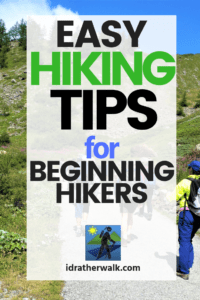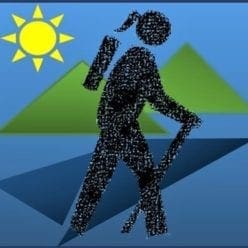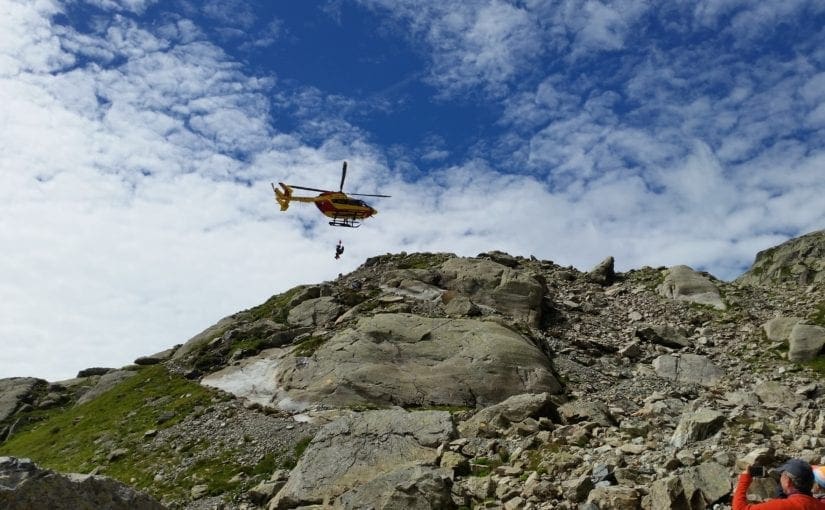Most recently updated January 16th, 2025
If you’re a hiking beginner, there are a few things you should know before hitting the trail.
You really don’t want to become famous as an unprepared hiker who needed to be rescued!
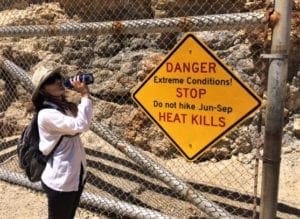
I’ve put together some quick hiking tips for beginners, and if I’ve written a longer post on the subject, included a link to that as well.
Even if you’ve been around the trail a few times, you still might find a useful tidbit or two.
HIKING 101
The basic physical requirements for a hike are:
- footwear that’s suited to your trail
- hiking clothing layers that can be adjusted as needed
- food and hydration for the trail
- a way to carry essentials (daypack or backpack)
- a destination, with a plan to get there and back.
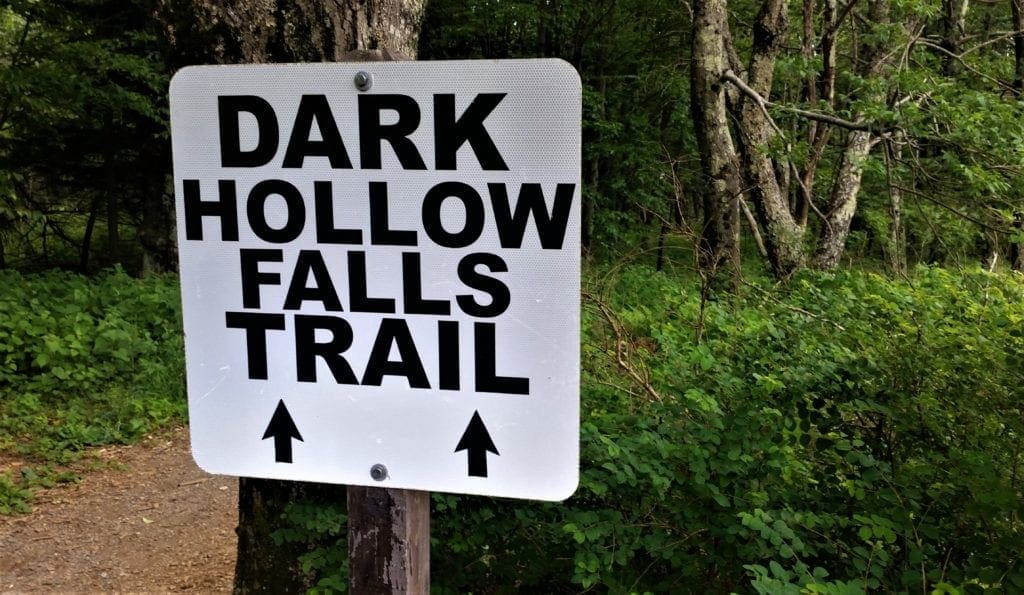
PLANNING YOUR HIKE
Find a Trail
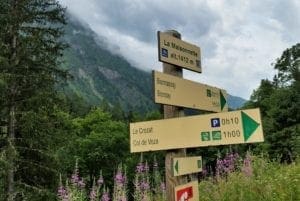
Do some research to find a trail suitable for beginners, preferably local to you. For ideas, check out websites for local parks and hiking forums.
If you want to hike in the US, Canada, Mexico or the Caribbean, you could take a look at the Trails.com trail finder.
You can also check www.alltrails.com for suggestions and recent trail reports.
Part of the fun of the outdoors is pushing your limits and endurance, but it’s probably best to be conservative on your first hike.
If you’ve got friends who are hikers, it’s a great idea to ask for their recommendations.
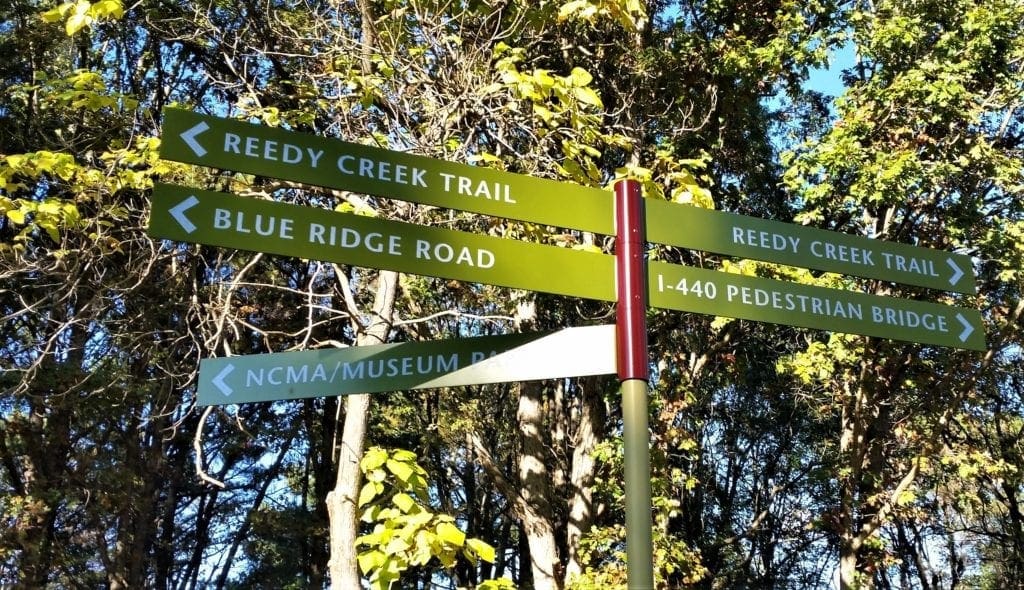
Travel Resources
You can also check out my Travel page for more information on Travel Resources and Adventure Travel companies.
Some of my posts contain affiliate links. If you make a purchase through an affiliate link, I will receive a small payment at no additional cost to you. As an Amazon Associate, and other marketing affiliations, I earn from qualifying purchases. See full Disclosure page here.
Determine Your Pace
If you’ve signed up for a group hike, there should be a pace (in mph) and length of hike in the description.
If you’re going out on your own, you can set your own pace, but you should still have some idea how fast you walk so you can estimate how long it will take for you to get back to the trailhead by a certain time or before dark.
 The easiest way to determine your current natural pace is to go out and walk a mile, and time it.
The easiest way to determine your current natural pace is to go out and walk a mile, and time it.
If you walk a mile in 30 minutes, then your pace is 2 miles per hour.
If you can do a mile in 15 minutes, then your pace is 4 miles per hour and so on.
You could use this same method walking a mile indoors on a treadmill.
You’ll go more slowly on unpaved trails in the woods, going up and down hills with roots and rocks, etc than you will on a paved surface or treadmill.
So if you’re maxing out going 4mph on a treadmill, you may want to aim for hikes set at 3mph or slower on natural trails.
Hike Length – Can you go the distance?
If you have been going to the gym (or chasing kids) and are reasonably fit, you should be able to walk a few miles at a moderate pace (2.5-3mph) with no issues.
You may want to go on a couple of these moderate hikes and see how you do before you look at a longer or faster-paced hike.
If you have not been moving around at all, you may want to do some training first indoors on a treadmill where you can get immediate attention for a problem. Start slowly and work your way to 3mph.
After you’re strong enough to walk a few miles on a treadmill without issues, you can hit the trail with confidence!
Find a HIKING Group or a Buddy
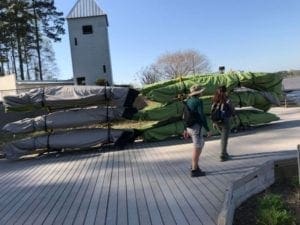
Some people like to join hiking groups. It is a good way to meet people with similar interests, and also learn about local trails.
Check out local hiking clubs, or online sites like Meetup.com.
I’m a hike leader at two local Meetups: Raleigh Recreational Hikers and I’d Rather Walk.
I learned a lot from RRH, and made some great hiking friends!
If you’re not big on groups, hiking with just one or two other people to start with is a good way to go.
The best way to learn basic hiking skills is first hand with a knowledgeable person by your side.

Check the Weather
 Checking the weather before your hike is a must. A current weather report will help you pack the right clothing and avoid planning your hike during any big storms.
Checking the weather before your hike is a must. A current weather report will help you pack the right clothing and avoid planning your hike during any big storms.
Most weather is not a problem as long as you are prepared.
That said, it’s a good idea to schedule your first hike for clear and sunny weather to maximize comfort and views – and avoid getting discouraged your first time out.
Make AN ESSENTIAL HIKING Gear Checklist
These are essentials because they are everything you need for a safe first hike.
You’ll need to beef up or scale down your gear, depending on the length and location of your hike.
The Essentials Include:
- Navigation: Trail Map, Compass, or GPS
- Sun Protection: Sunglasses, Sunscreen, and Hat
- Layers: Extra Clothing, Socks and Rain Jacket
- Light: Headlamp or Flashlight and Extra Batteries
- First-Aid: Enough for the length of Trip
- Fire: Lighter, Waterproof Matches
- Tools: Knife, Multitool, Duct Tape etc
- Food: Enough Food for an Extra Day
- Water: Enough Water for an Extra Day
- Shelter: Tent, Poncho, Space Blanket etc
Additional Info: check out the Dayhike post for everything you need to know about basic day hike gear.
Leave a Note
Let someone know where you’re going and when you plan to be back. Have you seen the movie 127 Hours? (Don’t forget your multi-tool! Too soon? Anyway… )
Always let at least one reliable person know when and where you are hiking, and when you expect to be back.
This can be a quick call or text message so they can easily pull up the details later if you don’t check in.
I usually send an email to my family, detailing where I’m going, what trails I expect to be on, and when I plan to get back to the trailhead or home.
The last thing you want is to end up lost with no one knowing where you are or even that you are hiking – or when to expect you to come back!
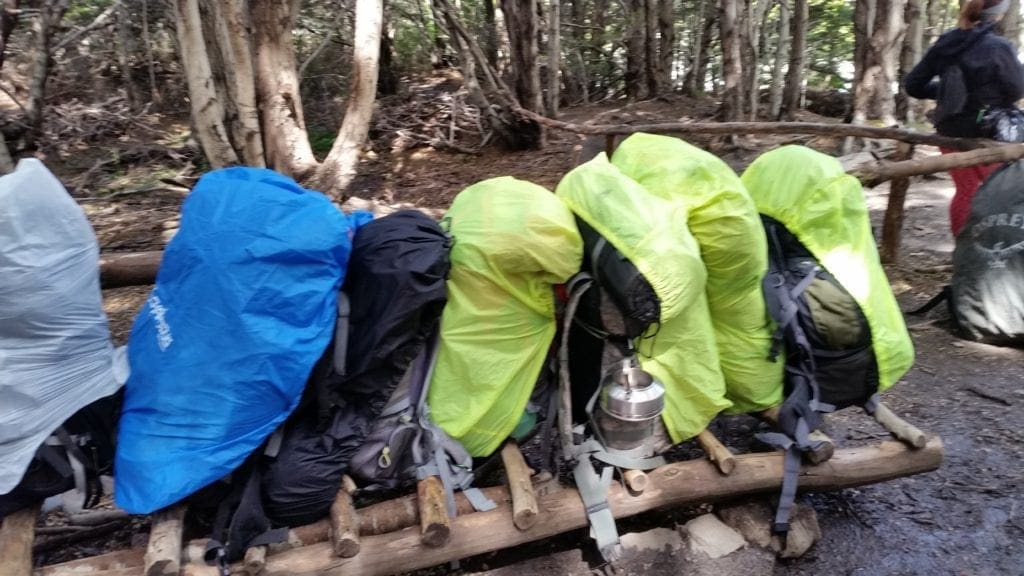
HIKING GEAR
Das Boots
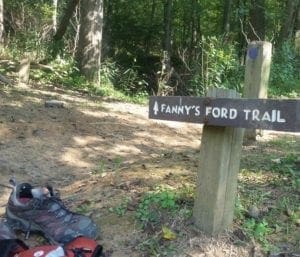
And don’t forget socks!
Keeping your feet happy is probably the single most important thing to do on a hike, other than not getting lost.
If your feet are happy, you’ll have a much better experience.
See this post How to Choose the Best Boots for boot selection tips and a lot of boot recommendations.
You can also see my Gear page and Dayhike Gear post for info on recommended boots and other hiking gear.
Dress in Layers
Plan your layers for the coldest weather you could possibly encounter on your hike.
As a general rule for clothing, never wear cotton the trail – it gets wet and heavy, and doesn’t dry out easily.

Wear fabrics that wick and dry quickly like merino wool and synthetic materials. Learn how to do it with my Dayhike Gear Guide.
Even in warm weather, the top of a windy peak can feel pretty cold if you’re sweaty from the hike up, so pack a layer to wear while you enjoy the view.
Water and Snacks
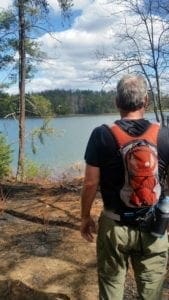
Snacks are one of the fun things about hiking – not least because you’ll be burning enough calories to enjoy your favorite treats guilt free!
Remove the excess packaging from food to save space in your pack.
Always bring enough to snack on if you end up unexpectedly spending longer in the woods than you had planned – because the weight of a little extra trail mix in your pack sure beats eating worms.
Also, bring enough water for an extra day on the trail, just in case. (It’s also a great idea to bring a water filter or purification tablets so you can refill at lakes or streams if need be.)
Bring a Rain Jacket
Pack a good quality rain jacket, no matter what the weather forecast says. This is one of the most important items of clothing you can bring.
Even if it’s not raining, a rain jacket can make a good outer layer to block the wind.
Look for one that is both waterproof and breathable.
Columbia Women’s Arcadia II Rain Jacket

Exercising outdoors can prove challenging in the winter, but Columbia Women’s Arcadia II Rain Jacket can make outdoor exercise or even just walking the dog in rainy and cold weather more bearable.
Breathable and waterproof, this jacket will keep you dry without overheating.
It even features zippered hand pockets to store your essentials and to keep your hands warm. It’s also conveniently machine-washable. 🙂
Columbia Men’s Watertight II Rain Jacket

Men can keep warm and dry with the Columbia’s Men’s Watertight II Rain Jacket.
It’s lightweight so it won’t slow you down, but it will protect you if the weather suddenly goes bad.
Features include a hood, two side pockets, elastic cuffs, and an elastic hem.
For more check out another selection of rain jackets for hikers.
ON THE TRAIL
DRINK WATER OFTEN, even before you feel thirsty. Dehydration can make you more susceptible to hypothermia and altitude sickness.
IF YOUR SOCKS GET WET, change them the first chance you get. This will prevent blisters from forming.
TAKE A 10 MINUTE BREAK EVERY HOUR. This quick break helps remove the metabolic waste that build up in your legs while hiking.
STUDY YOUR MAP before you begin the hike. This gives you a good idea of your route, possible emergency exit points as well as places to fill up on water.
PACK FOR EASY ACCESS. Put essential items like a map, first aid kit and medications, flash light, and snacks in the outside pouches or in upper compartments of your pack to get to them easily.
IF YOU HAVE BAD KNEES, give hiking poles a try. If you don’t know what to choose, check out some picks below of the best hiking poles in the market.

OTHER TIPS & TRICKS
For first time hikers, TRY TO MAKE YOUR TRIP SHORT. This gives you a chance to test yourself without being too far from civilization (or a trailhead) if things turn bad.
DON’T HUFF AND PUFF. Walking at a pace that allows you to be able to walk and talk means that your legs and your body are getting the oxygen needed to function efficiently.
To STAY EXTRA DRY IN THE RAIN wrap a synthetic chamois or a Buff around your neck before pulling over your jacket hood. Any rain that may drip inside your jacket will be trapped in the towel instead of getting your clothes wet. Also, wear a rain poncho over the top of your jacket and pack as an added layer of protection.
To WEAR YOUR PACK CORRECTLY, loosen all straps first before putting it on.
- First tighten the hip belt, which should sit on your hips, not above them.
- Then tighten the shoulder straps.
- Your sternum strap shouldn’t be super tight but simply help keep the shoulder straps in position.
If you are planning to get a new pack, check out some of my top picks here.
RESPECT NATURE AND FELLOW HIKERS

Next to wearing the right footgear, practicing Leave No Trace principles is the most important thing to do on your hike.
Also, be sure to use proper trail etiquette to respect other hikers and the wilderness.
Don’t litter, pick wildflowers, or leave the trail and trample vegetation.
If you see garbage pick it up, etc.
Basically, try to leave the trail better than you found it.
Additional Info: Read up on how to Leave No Trace
HIKE YOUR OWN HIKE
Lastly, hike on your own terms! Enjoy the trail at your own pace, hike as far as you want, and take breaks when you want.
You don’t need to keep up with the trail runner that just sprinted up the switchbacks ahead of you – it’s not a race 🙂

Even if you are hiking with a group, you need to take care of yourself – just let your hike leader know if you’re leaving the group, so they don’t worry about you.
Hiking should be an escape from the pressures of everyday life, and you should only push yourself if you want to.
Otherwise enjoy the peacefulness of the trail, either on your own or in the company of others – it’s all up to you 🙂

TIME TO HIT THE TRAIL!
If you’re looking for ideas about where to hike locally, or in State and National Parks, take a look at my Hiking Destinations page.
If you have any questions drop me a line a idratherwalkblog@gmail.com and I’ll respond as quickly as I can.
Thanks for stopping by – see you next time! LJ
To Get New Idratherwalk Posts
sent directly to your inbox (how convenient!) Click this Button
If you like this page, please share it!
